Co-authored with Kevin Molloy, Principal Librarian Victorian and Australian Collections
It is always a highlight when non-standard collections come through the Preservation studio. A recent example being a significant collection of 19th century botanical specimens compiled by Government Botanist, Baron Ferdinand von Mueller, The Educational Collections of Australian Plants (1873-1876), YMS 10867.
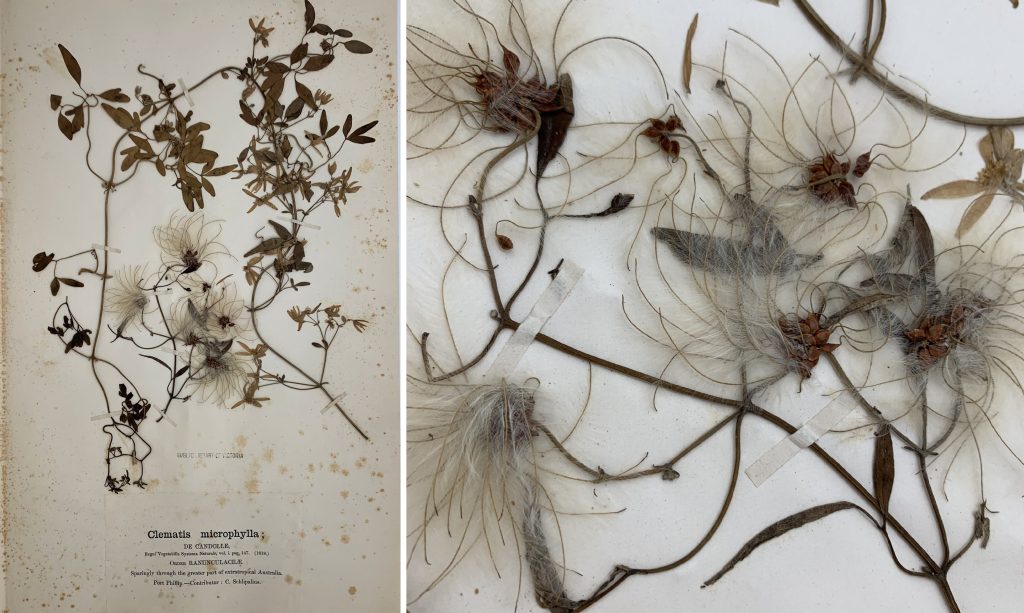
While not a new addition to the Collection, the specimens had been repackaged many years prior. As with many things, preservation materials and methods evolve, and occasionally items are flagged for rehousing that have been in the Collection for some time. The goal, always, is to ensure long-term preservation and accessibility.
Who was Baron Ferdinand von Mueller?
The renowned German trained Baron Ferdinand von Mueller (1825-1896) was appointed Government Botanist in 1853 by Governor Joseph La Trobe. He was an adept plant collector and explorer, by his own estimate acquiring specimens of over half the native plants in Victoria and identifying many local species and genera unique to the region.
A person of considerable skills, scientific curiosity and resourcefulness, von Mueller undertook numerous expeditions throughout Victoria and in other parts of Australia. One such adventure being the 1857 North Australian Exploration Expedition, trekking up the Victoria River in the Northern Territory to the Great Sandy Desert. For his extensive work on this expedition, he was subsequently appointed Director of the Botanical Gardens, in Melbourne.

Moir, J. K. (John Kinmont); PCLTA 2222 F. 1372.
Educational Collections of Australian Plants
Von Mueller had a strong interest in botanical education and recognised the need for general access to botanical literature and specimens. In 1872, motivated by these concerns, he made an educational proposal to the Victorian Government. His vision? The compilation of collections of botanical specimens, with brief identification texts, to be deposited with the growing number of mechanics institutes throughout Victoria.
Von Mueller met some resistance from Government administrators, but did finally get approval for the project, albeit without additional funding. Nevertheless, he continued collating specimens and the first volume of Educational Collections of Australian Plants was published in 1873 by the Government Printer.
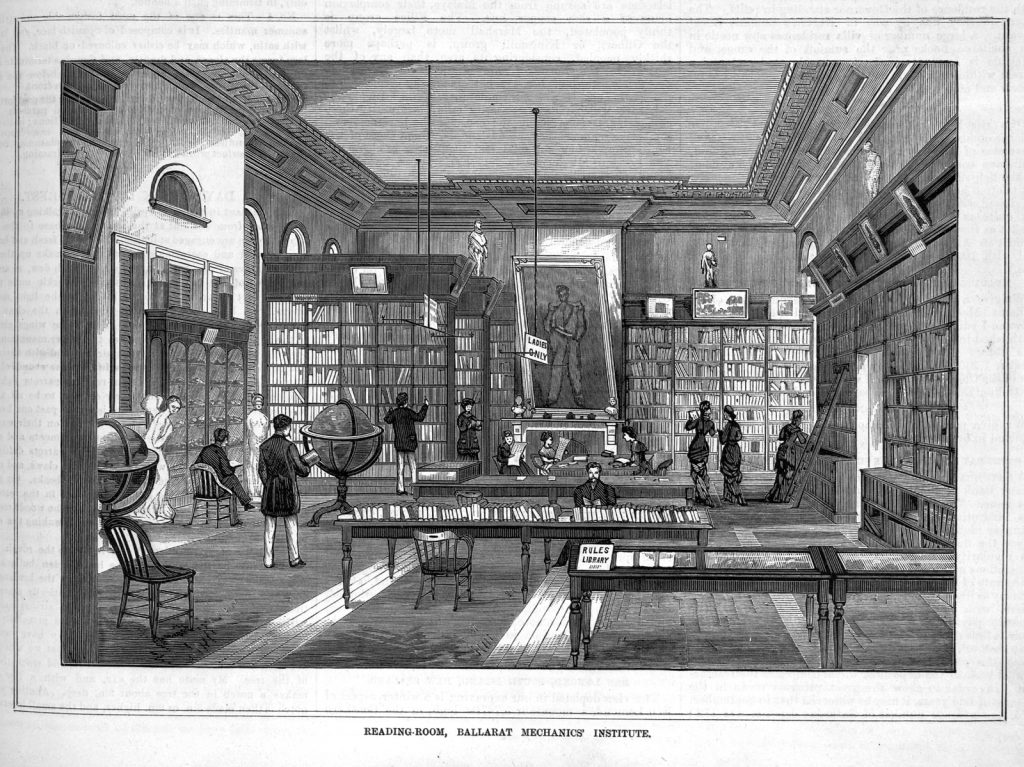
His target audience appears to have been manual workers, and the labouring and agricultural classes who most frequently utilised the resources held by mechanics’ institutes. This was an acknowledgement, perhaps, that educated enthusiasts were already accommodated by the Botanical Gardens’ library and the newly established Technological and Industrial Museum opened in Melbourne in 1870 (on the site that is now the La Trobe Reading Room at State Library Victoria).
A review of the third and final volume in the Sydney Morning Herald on 12 August 1876 attests to this aim:
…Whilst, therefore, this eminent botanist, by his published works, is making known in all parts of the world the vegetable resources of this country, he is also alluring the young and imperfectly educated to the study of plants by placing before them a simple mode of instruction… And so, Baron Mueller, by the progressive character of his works, seems to be accommodating himself to all classes.
(Sydney Morning Herald 12 August 1876)
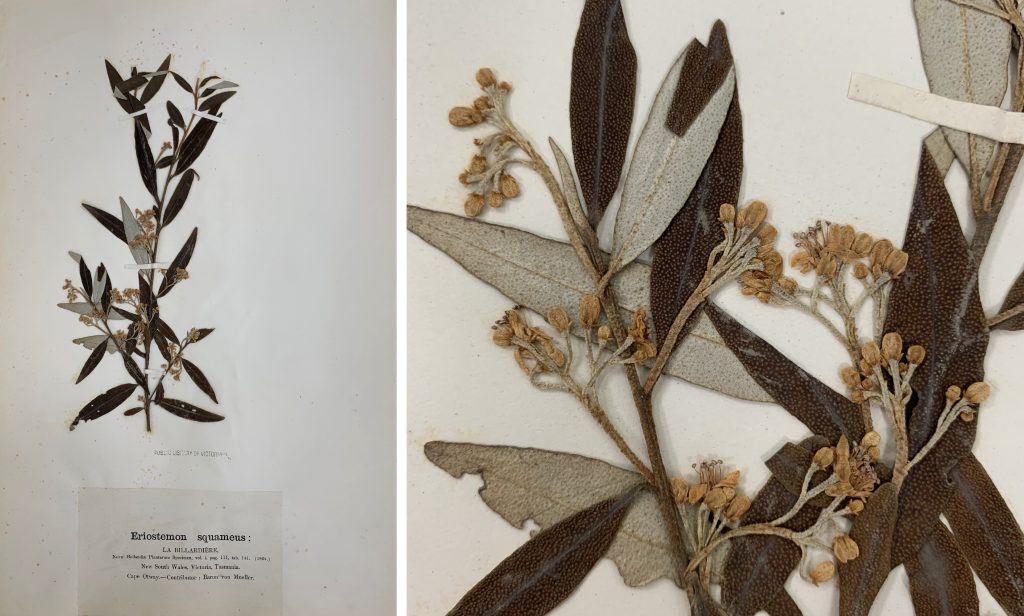
Von Mueller initially envisaged 100 hard cover folio volumes, however the final number was far less. There were 46 recipients of the first folio volume, selected from 130 libraries, athenaeums, museums, and mechanics’ institutes. The second folio was completed and published in 1875 with a similar distribution. The subsequent and final folio was released in 1876, but to a much smaller number of institutes.
Each volume contained 50 pages of both flowering and fruiting specimens. Labels affixed to each sheet included the scientific name, location of specimen, distribution, and name of the collector. The work was by all accounts labour intensive, completed at weekends and in the late hours with only one assistant. Specimens needed to be carefully dried and prepared in a controlled environment that effectively screened out insects and plant diseases that might be harmful to other collections at the Botanical Gardens and Herbarium.
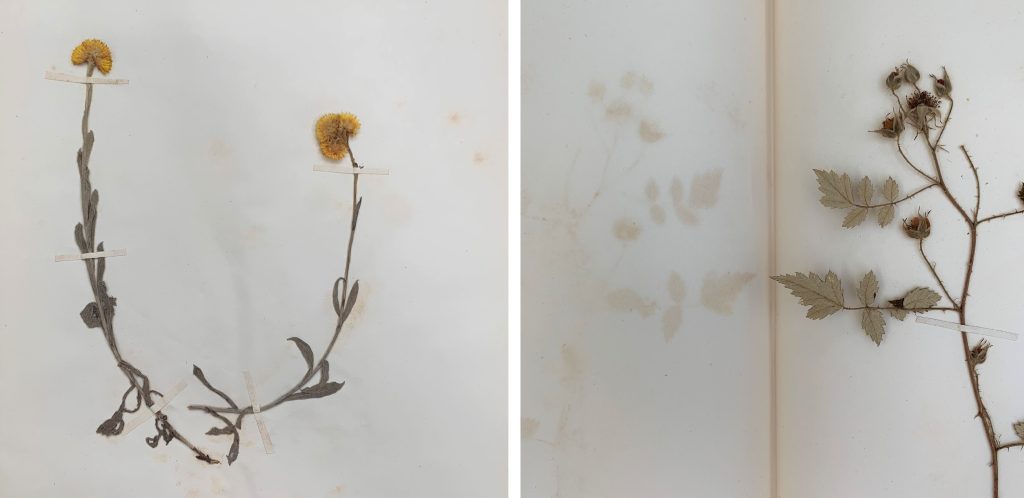
The Melbourne Public Library was not an initial recipient of what is now known as von Mueller’s Educational Collections of Australian Plants, 1873-1876. The Library’s first volume was gifted by the Kew City Council in 1937, followed by acquisition of the subsequent volumes.

Preservation rehousing
The three volumes comprising the Library’s edition of the Educational Collections of Australian Plants contain 141 botanical specimens, along with three title pages. Upon its arrival in Preservation, the specimens were divided into seven bundles, wrapped in paper and packaged up in Corflute folders. While these folders provided a level of protection, Corflute is no longer considered a preservation-grade material and the paper wrappers and sheets of interleaving had discoloured over time. There were too many specimens in each bundle, and they were without adequate support for safe handling.

The non-original, discoloured paper wrappers and interleaving were discarded. Each specimen was placed in an unbuffered archival paper wrapper (otherwise known as a flimsy) with a fresh sheet of archival interleaving. For that extra level of TLC, each specimen was then placed in a custom four-flap archival board folder, providing protection as well as a rigid support for handling. Any loose fragments were placed in archival specimen envelopes and attached with paper corners to the inside flap of the folders. Custom boxes were designed to fit approximately 10 specimens in each, giving them a bit more ‘breathing’ room than the original folders had provided.

Caution when handling!
Historically, botanical specimens were often treated with pesticides to prevent insect damage. Many, such as mercuric chloride, used as a pesticide on herbaria sheets from the 1800s through to the 1980s, are now known to be toxic. Specimens can continue to emit metallic mercury many decades after their last treatment. So, as a general precaution, it is assumed that the von Mueller specimens were previously treated with this pesticide. The following controls ensure the risk remains low for staff and public access:
- flimsies reduce the need for direct handling of original backing sheets
- safety analysis forms for mercuric chloride are included in each box
- safe handling instructions are provided
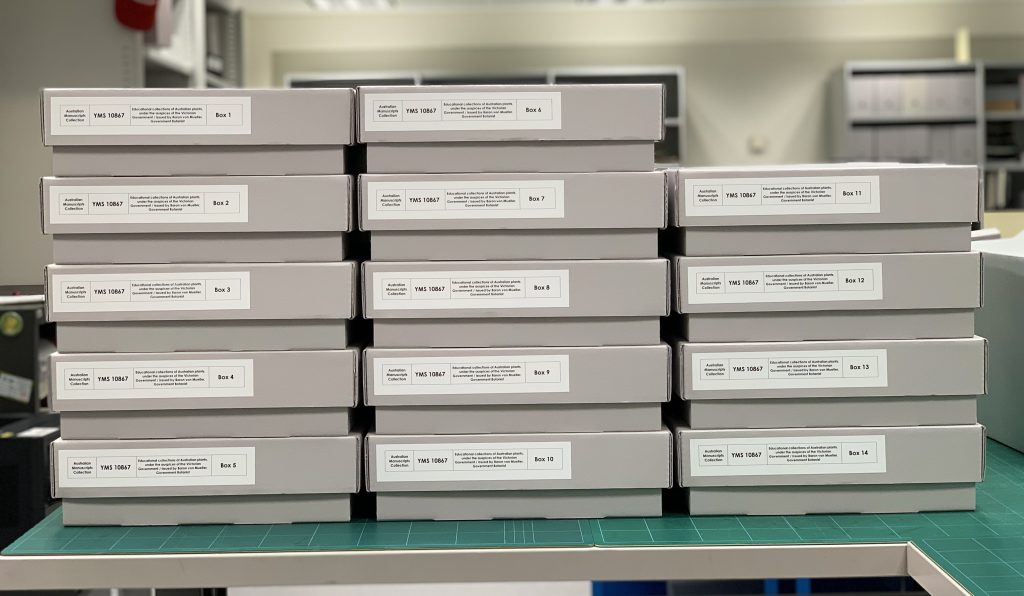
The specimens are now safe and snug in their new enclosures, protected and preserved for many generations to come. The next step will be to have them digitised, to further reduce the need for direct handling, and to provide equitable access to this significant collection. Watch this space!
References
Churchward, M, 2020, ‘Opening of the Industrial & Technological Museum, Melbourne, 9 September 1870’, Museums Victoria Collections, viewed October 2022, https://collections.museumsvictoria.com.au/
Maroske, S, 2007, ‘Educational exsiccatae: Ferdinand von Mueller’s botanical lessons in colonial Victoria’, Vol. 2, No. 1, reCollections: Journal of the National Museum of Australia, viewed October 2022, https://recollections.nma.gov.au/issues/vol_2_no_1/papers/educational_exsiccatae#14
State Library Victoria, Accession Registers, Manuscripts Collection
Morris, D, 1974, ‘Mueller, Sir Ferdinand Jakob Heinrich von (1825–1896)’, Australian Dictionary of Biography, viewed October 2022, https://adb.anu.edu.au/biography/mueller-sir-ferdinand-jakob-heinrich-von-4266/text6893


Thank you for your article. Most interesting to find out what is happening to these specimens.
Glad you enjoyed it!
How timely! At History West we are currently considering the best way to more safely house approx 30 plant specimens collected in 1832 by Alfred Hillman that have been in our collection for many years. Your solution gives us another option to consider.
Fabulous, Wendy! Feel free to reach out if you have any questions about the rehousing and/or handling of the specimens in your collection.
Will there be an online effort (like Digivol?) to get online volunteers to help with the digital transfer? Reading the old labels is an art in itself.
Hi Colin, Digivol is such a great initiative! In this instance, we are lucky enough to have in-house expertise for this important work. As resources become available in the near future, the specimens will be ‘captured’ by our Collection Digitisation team and described by our Collection Development and Description team.
So Proud of him.
Oh my, unbelievable. Reminds me of my great grandmother‘s bits and bods.
What a truly grand collection,history we rarely see in photographs today. Thank you to all who helped put this marvellous collection together with care thoughtfulness and expertise.
Thanks Susan. I wonder if this comment was intended for the fabulous Preserving the Saunders Family Archive blog??